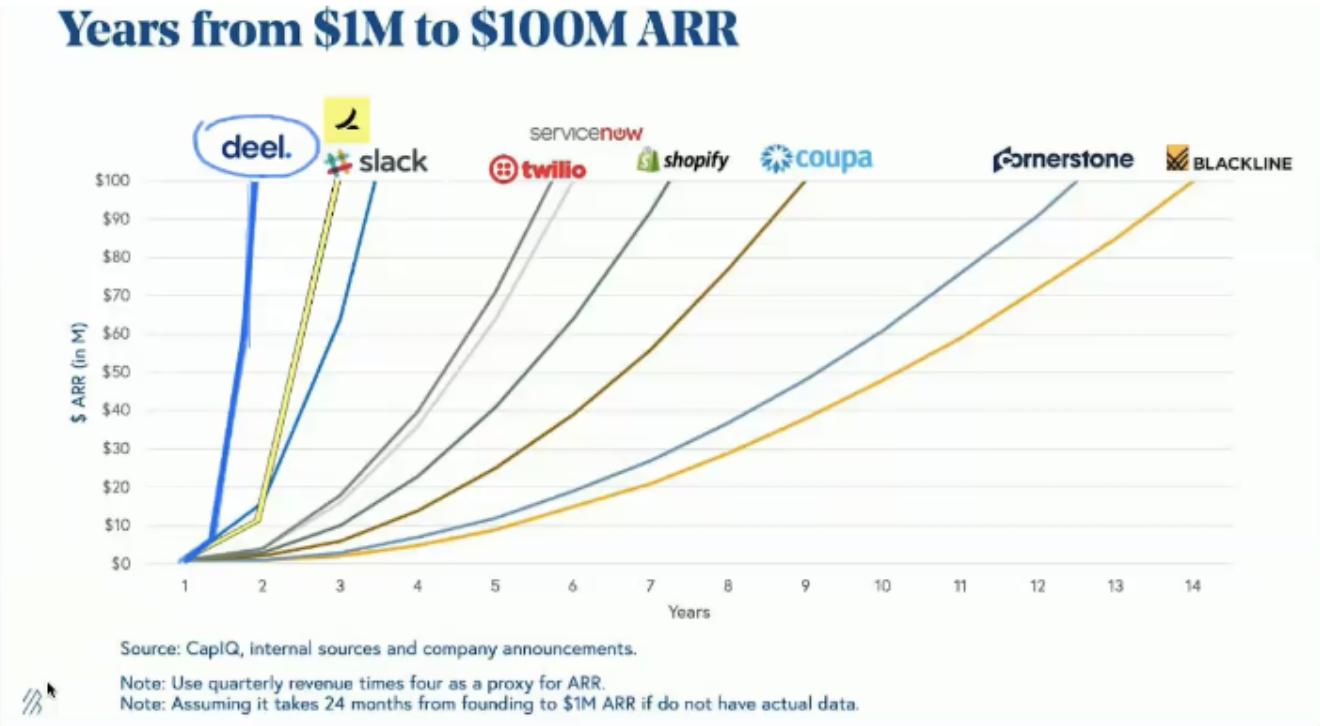I have the secret formula to what makes a pitch with unicorn potential.
It took us five years of research and 2000 interviews.
But now - we know the common denominators for 30 of the fastest-growing B2B SaaS companies in the world.
What enabled companies like Deel, Stripe and Slack to kickstart their exponential growth?

Our research points to four things.
1. Focus on a well-defined primary target group
The unicorns we studied all had a very specific target group when things took off.
Some had nailed it from the start.
Others figured it out along the way.
But the results are clear - you need to have a precise idea of whom you're solving the problem for. Otherwise, you're setting your pitch up for failure.
In practice, that means identifying a specific group of decision-makers, often within a specific vertical, who are most likely to benefit from your product or service.
Stripe's primary target group was, for example, business-driven developers - entrepreneurs who knew how to code. And Slack targeted product developers at software companies.
By now, they have extended that audience. But it was that first well-defined target group that kicked off growth initially.
It's important to resist the temptation to target multiple groups at once. It's hard enough to get product-market fit and messaging right for one target group. By focusing on one target group initially and mastering it, you can then expand to additional groups in the future.
2. Connect your offering to a highly business-critical use case
To succeed with your unicorn pitch, you must solve a highly business-critical use case.
A highly critical use case is a specific process or function within a business that is essential for its success or survival. The use case is typically a core aspect of the business that directly impacts revenue, customer satisfaction, or operational efficiency.
What makes a use case "highly business-critical" is that its consequences are highly visible and evident to important stakeholders within the organisation or customers. In other words, not succeeding with these use cases not only prevents your target group from achieving their goals but also draws attention.
No one stayed up at night thinking about group chat systems. But many were thinking about how to communicate more effectively, reduce the number of emails and improve collaboration.
So when Slack said they could reduce emails by 48% and enable smoother internal communication - companies weren't shy to jump in heads first.
And Slack became the fastest-growing app ever at the time.
Companies that manage to create remarkable growth, are all great at linking their product to an overarching use case.

The most common pitfall
The most common mistake we see is companies trying to solve too many use cases at once.
Sure, solving problems is great - but it deteriorates focus.
It's already challenging enough to address one use case outstandingly well.
If you want dramatic growth, you need to map out ONE use case. And that use case must be of extremely high importance.
Focus on becoming an expert in your niche and demonstrating the value of your solution to your target group. When you have become an industry standard for that particular business use case, you can then go ahead and solve more use cases.
3. Find high-impact suboptimalities
The studied unicorns had all found one or a few suboptimalities related to the highly business-critical use case that their platform could reduce.
In the context of B2B SaaS, a suboptimality refers to a gap or deficiency between the current state of a business-critical process and its ideal or desired state, leading to lower performance, efficiency, or effectiveness. The impact of suboptimalities on a customer's ability to execute their business-critical use cases can range from low to high.
Let's take Deel, for example.
The primary target group: Growing software companies that need to hire staff and freelancers abroad.
The highly business critical: To ensure good legal agreements with employees and contractors that work abroad and pay them in accordance with local tax laws.
Suboptimalities: Without Deel, you have to set up your own company in each country, make sure that all employment contracts are compliant with local laws that change all the time, and fill out tons of forms to be able to pay the wages with the right employer taxes. It's terribly complicated and time-consuming, and the risk of errors is high.
And Slack found that people hated email. Around 2013, employees received too many (more than 500 per day), leading them not to see the critical ones in time. That ultimately resulted in people physically walking over to each other in the office space, causing interruption and productivity losses.
4. Have a solution approach
The fourth thing was an easy and effective solution approach that enables decision-makers to execute the business-critical use case significantly better than before by reducing suboptimalities.
When describing the solution approach, it should encompass the core features, functionalities, or innovations that set your product apart from the competition and make it an attractive choice for your target audience.
This is the overall description of the solution, succinct and impactful, no more than five sentences that elicit a reaction from decision-makers in your target group like "Wow - this could really be much better than our current solution!"
Deel, for example, created local offices worldwide and made it possible for companies to hire staff as their own through Deel’s entity. They hired legal experts to keep up with local compliance and enabled customers, via their SaaS service, to create employment contracts and pay salaries easily.
Slack helped teams communicate, create groups for different topics and manage notifications to never miss something important. And they reduced the heavy email load.
How to do it in practice
Not all of us were born genius or blessed with luck.
But applying these four things to your unicorn pitch gives even the average person great prerequisites to succeed.
So, how do you do it in practice?
Many of the clients we meet at Baboom have hypotheses but don't know their answer for sure to these four fundamentals. So we help them find product-market fit and a winning sales pitch.
The method we've tried on our latest clients has worked very well.
It starts with us doing qualitative interviews with potential clients. These can be hard to find, as you need decision-makers high up in the organisation. We work a lot with references and recommendations to get qualified people to talk to.
When doing the interviews, a pattern often appears quickly. The goal is to find a highly business-critical use case and one or a few high-impact suboptimalites that the platform can significantly reduce.
Then, at the end of the interview, we ask: if we solve this, will you meet us for a second meeting where we present the solution?
If they say yes - you're on to something.
If they don't - you're not.
And in that case, you just keep iterating until you find product-market fit. When you find something that sticks, you have everything you need to build a unicorn pitch based on research, not guesswork.
When the feedback interviews naturally turn into fast deals – with the same underlying sales pitch – then you have kickstarted explosive growth!
/ Per Lange
Founder of Baboom









